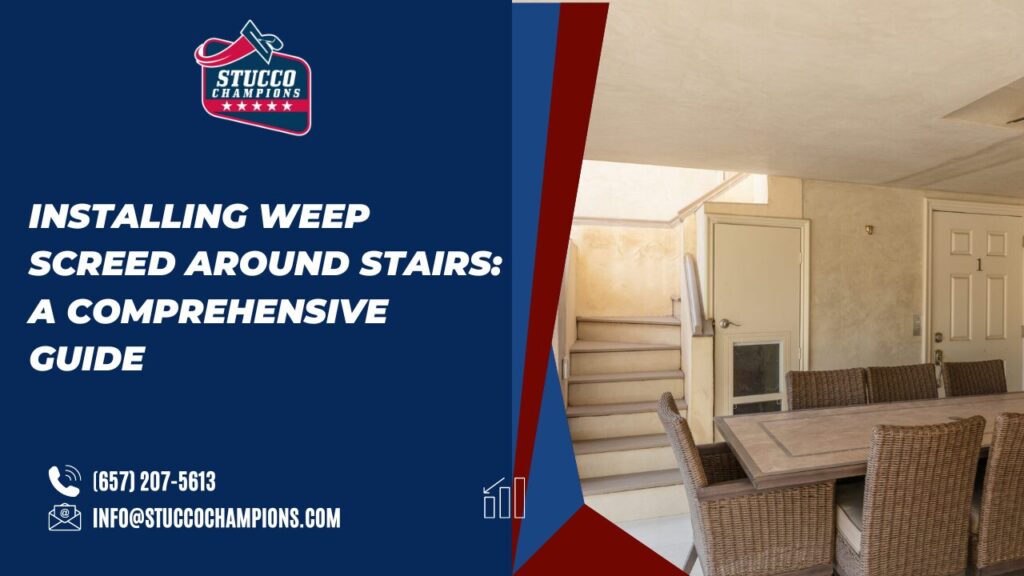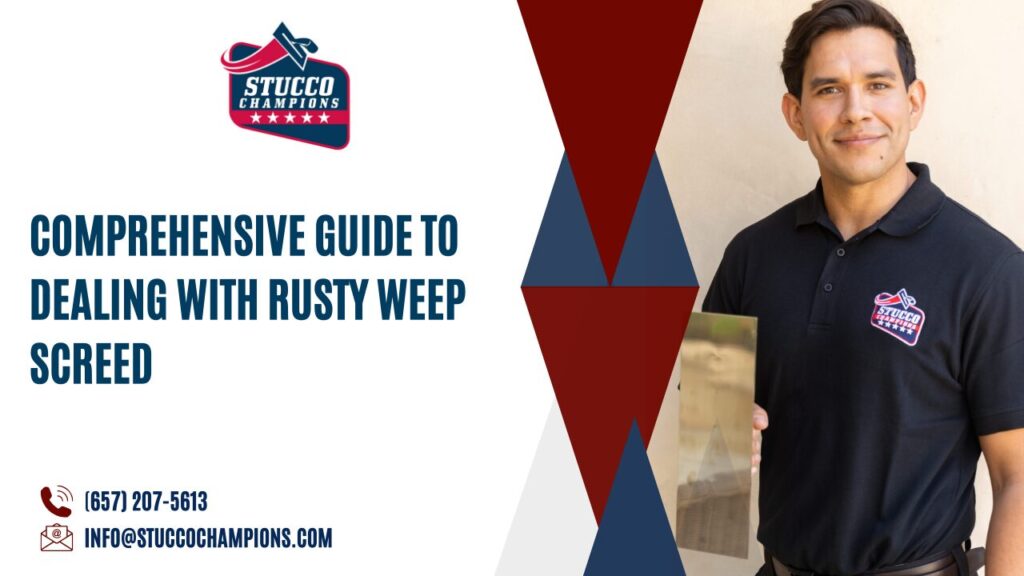Step 1: Accurate Measurement of Stair Tread
Before beginning, it’s important to accurately measure the length of each stair tread. Use a reliable measuring tape and note down the measurements. For efficiency, you can measure and cut all the weep screed pieces for the entire stairwell in advance. This preemptive step aids in seamless installation and saves significant time.
Technical Tip: The ideal length of the weep screed should be the exact length of the stair tread plus an additional 0.5 inches on each side for proper overlap.
Step 2: Precise Guidelines & Utilization of Blocks
Mark a point 2 inches from the riser—this is where the weep screed installation will commence, ensuring enough space for the vertical piece that will be added later. Then, create two support blocks, each having one side precisely cut to 2 inches. These blocks will support the weep screed during installation, ensuring it remains level and at the correct height.
Expert Insight: The 2-inch mark ensures that the weep screed is positioned correctly to manage moisture effectively and allows for necessary adjustments for the vertical screed.
Step 3: Setting and Securing the Weep Screed
Place the weep screed on the prepared blocks, aligning the left side with the 2-inch guideline. Secure it by placing a staple at each top corner of the flange. This step is crucial for ensuring that the weep screed is firmly affixed and functions effectively.
Accuracy Check: Use a level to ensure that the weep screed is perfectly horizontal before securing it.
Step 4: Installation of Horizontal Pieces on Stairs
Proceed with the installation of horizontal weep screed pieces on all treads of the staircase. This methodical approach saves time and sets a solid foundation for installing vertical weep screed pieces.
Professional Advice: Ensure each piece is aligned with the edge of the stair tread for a uniform and effective installation.
Step 5: Measuring for Vertical Runs
With the horizontal pieces in place, measure the distance between the top and bottom pieces to determine the size needed for the vertical weep screed. It’s efficient to measure and cut all these pieces in advance, as it streamlines the installation process.
Technical Note: The vertical weep screed should fit snugly between the horizontal pieces, with no gaps.
Step 6: Installing the Vertical Pieces
The final step is to install the vertical pieces of weep screed. This completes the installation process, ensuring that each stair is adequately protected against moisture.
Quality Assurance: After installation, inspect each joint to ensure there are no gaps or misalignments that could compromise the effectiveness of the weep screed.
Ensuring Effective Moisture Management
The installation of weep screed around stairs is a crucial task for protecting the structural integrity and longevity of your building. By following these detailed steps and employing precise measurements, you can ensure a successful installation. Remember, accuracy and careful planning are key to effective moisture management in construction.
Last week, we shared One Coat Stucco Weep Screed Installation, offering a step-by-step guide on correctly installing weep screed for one-coat stucco systems. If you want to ensure proper drainage and longevity for your stucco project, don’t miss this informative post!
—




